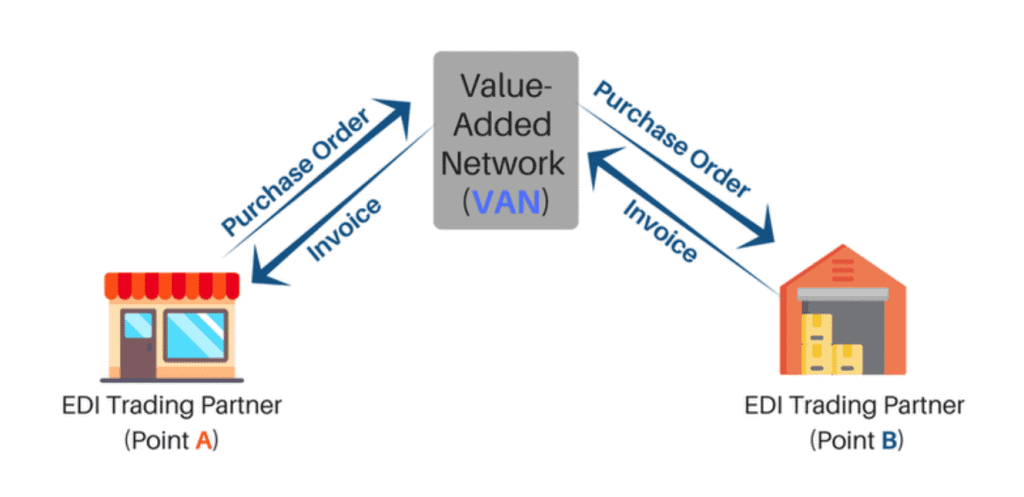EDI communication networks and protocols
The EDI software also takes care of the EDI communication, i.e. the sending and receiving of the EDI messages. Because humans are not involved in EDI communication, it is of crucial importance that the EDI message traffic is secure. Therefore, the software uses secure networks and communication protocols.
Value-Added Network (VAN)
A Value-Added Network (VAN) is a secure network in which messages are protected and securely exchanged. The VAN simplifies the communication process by reducing the number of parties a company has to communicate with. In fact, the VAN acts as an “intermediary” between the various parties that want to share data with each other.
AS1, AS2
AS1 and AS2 are protocols that describe how EDI data is securely and reliably exchanged over SMTP/e-mail (AS1) and HTTP/internet (AS2).
OFTP2
OFTP2 is a secure protocol that ensures that confidential and sensitive information is exchanged quickly and reliably using SSL and encryption certificates. OFTP2 works according to partner authentication. OFTP2 is widely used mainly in the automotive industry.
SFTP
SFTP is a protocol for sending files over the internet securely (encrypted), which uses a so-called secure shell (SSH).
PEPPOL
PEPPOL is a network in which affiliated organizations send electronic invoices in a secure manner. The network uses an access point for this. Registration in the network takes place on the basis of unique ID numbers such as Chamber of Commerce, VAT, IBAN and OIN numbers (government institutions).
EDI partner OMS International
OMS International is a reliable EDI partner because we have years of knowledge and experience in electronic B2B/B2G communication and data integration. We actively work with our customers and offer suitable, scalable and future-proof EDI solutions.
Behind the solutions of OMS International is an advanced development team. In this way we guarantee that the solutions are constantly up-to-date and grow with the developments in the market and your company. Together with you, we ensure that your EDI solution works optimally – now and in the future.




